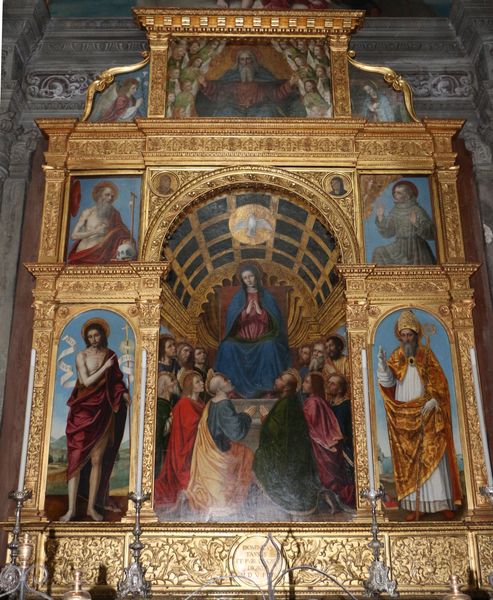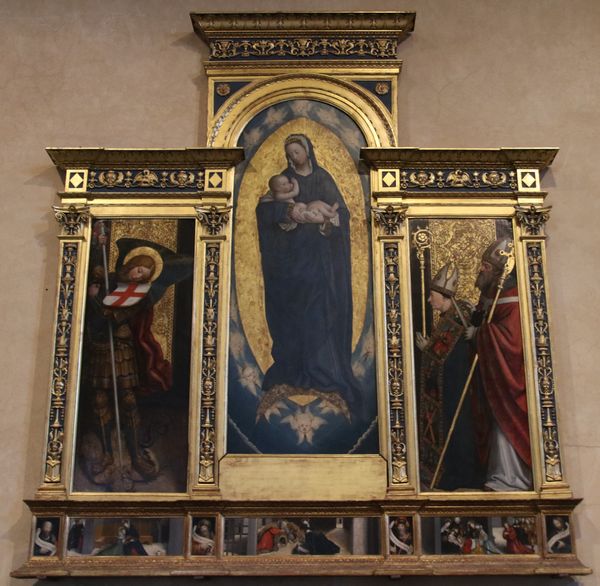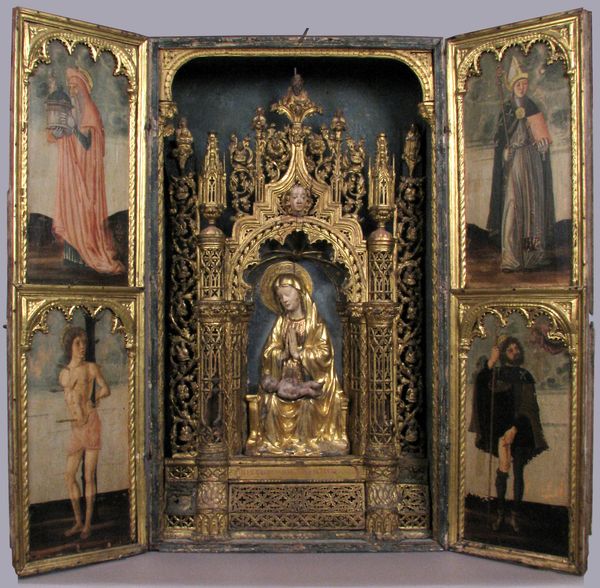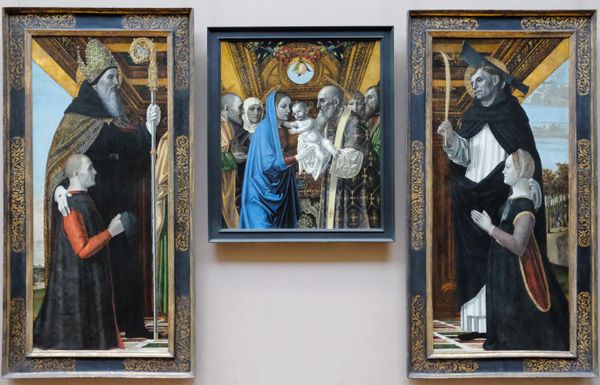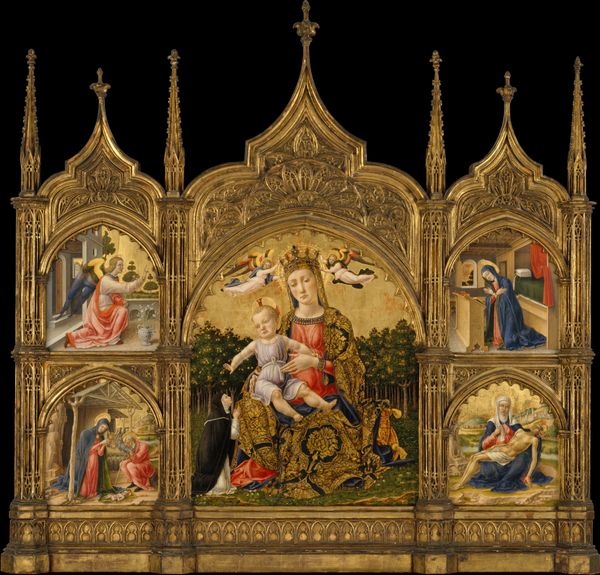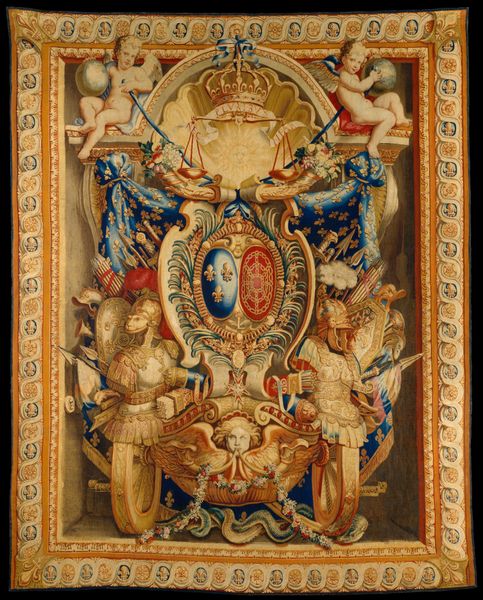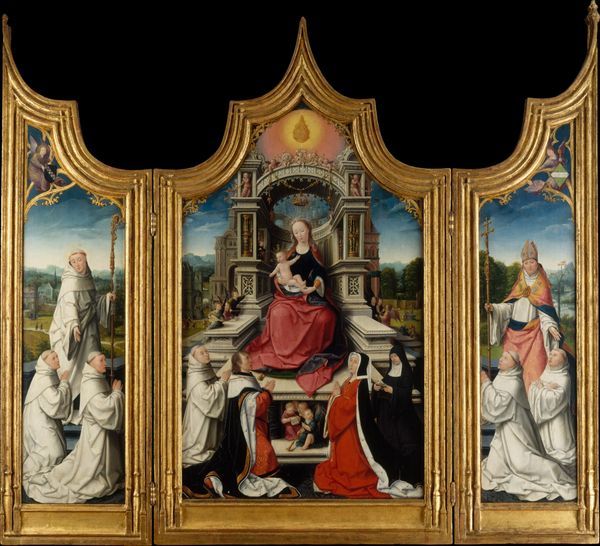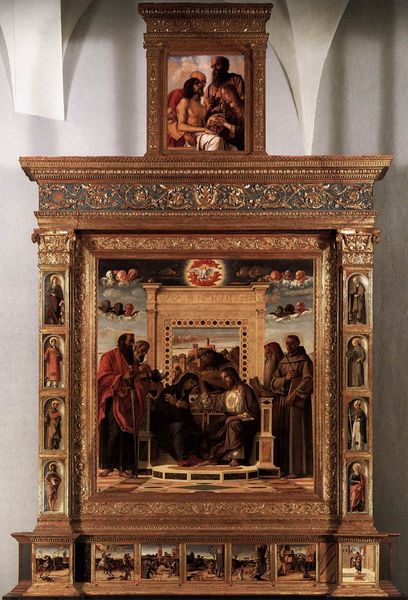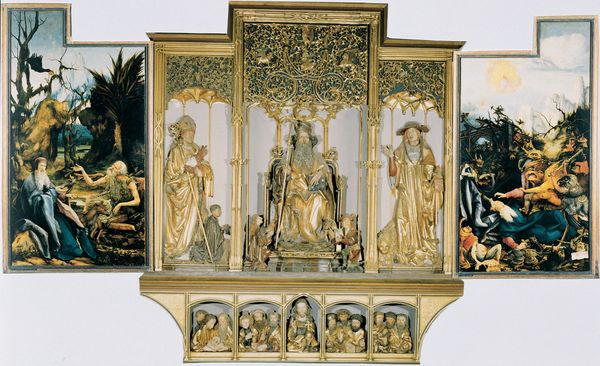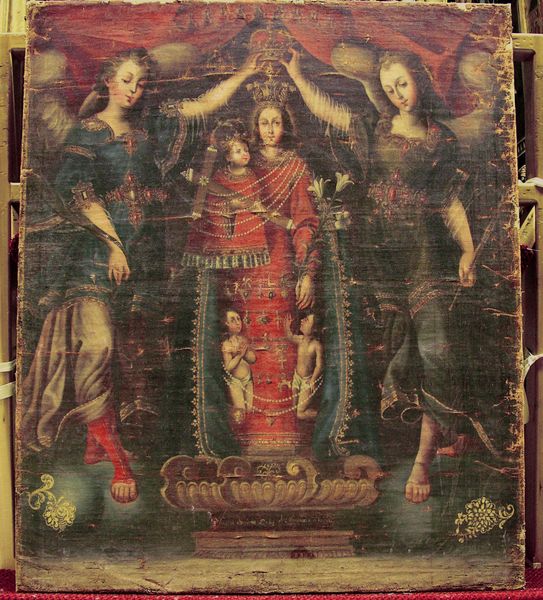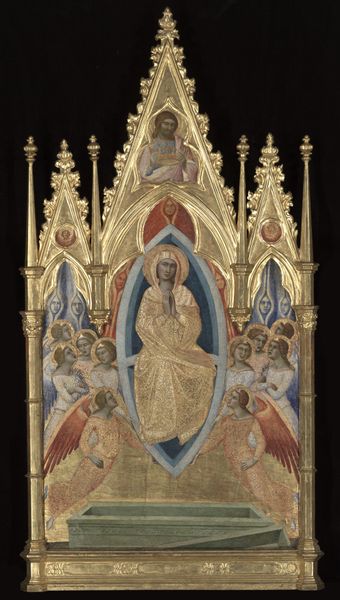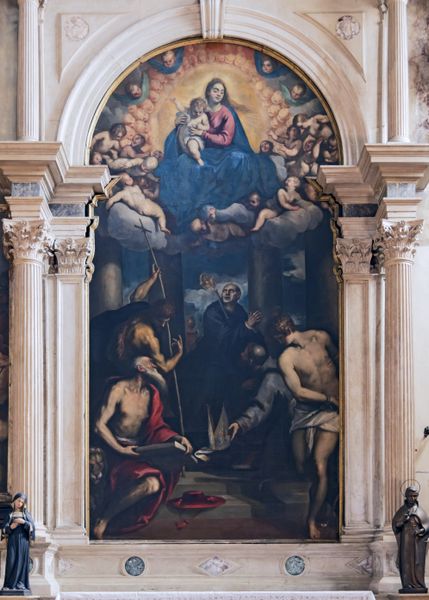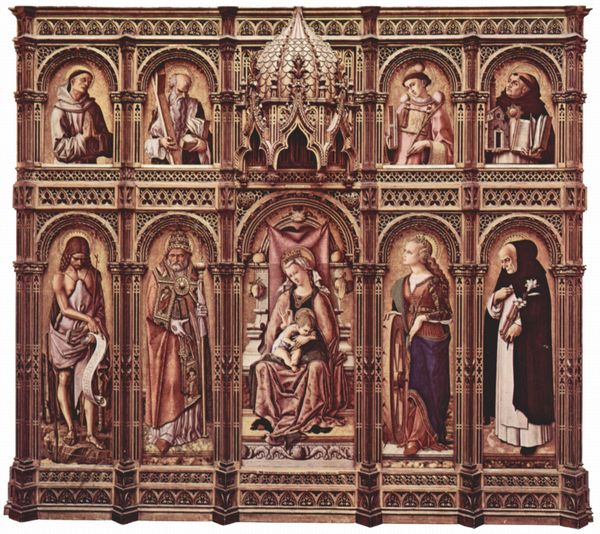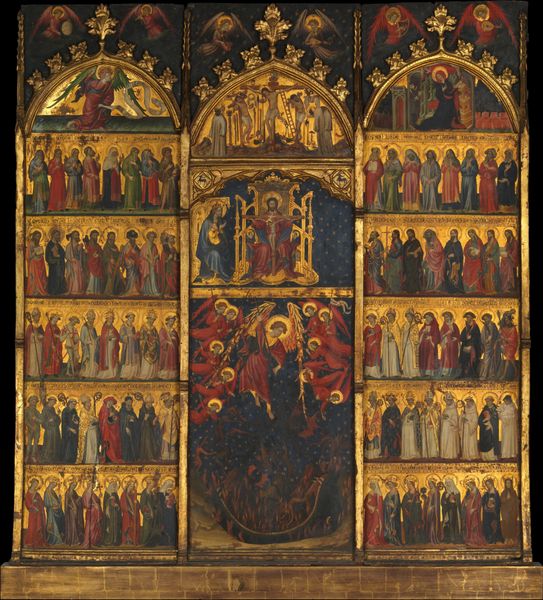
panel, carving, tempera, painting
#
portrait
#
medieval
#
panel
#
carving
#
narrative-art
#
tempera
#
painting
#
holy-places
#
figuration
#
historic architecture
#
traditional architecture
#
history-painting
#
international-gothic
#
academic-art
#
miniature
Copyright: Public domain
Editor: This is The Polyptych of St. Crispin and Crispiniano by Defendente Ferrari. It seems to be a tempera and gold on panel painting, and the format is rather elaborate. The symmetrical composition gives it a very formal and hieratic quality. How do you approach a piece like this from a critical perspective? Curator: Let’s begin by examining the interplay of line and plane. The sharp, deliberate lines defining the figures and architectural details create a sense of defined space. Notice how the artist utilizes gold leaf. Do you observe a distinction in how gold is used—perhaps in the background versus the garments or figures? Editor: I do. It seems more patterned in the backgrounds, whereas on the figures it highlights and contours specific areas. Is there something particular that you notice about the artist’s choices on surface treatment? Curator: Indeed. Ferrari juxtaposes highly ornamented surfaces with passages of relative simplicity. Consider the Madonna's robe compared to the gold tracery that adorns the frame. It establishes visual rhythm, does it not? Observe how the eye is invited to move throughout the entirety of the construction. How does this tension between texture and restraint inform the piece as a whole? Editor: That contrast definitely emphasizes the texture and intricate nature of the decorations. Focusing on the visual relationships, it’s interesting to consider the structure beyond just the subject matter. Curator: Precisely. By deconstructing its formal properties, one can move beyond the iconography to consider the artist's intentions in the act of pictorial construction itself. It reveals how visual choices generate meaning and feeling. Editor: That's fascinating! Considering art with its visual components separated from its subjects gives it new meaning and perspective. Thank you for opening my eyes to this piece. Curator: It has been a pleasure; observing how visual structure communicates allows us fresh ways to see art old or new.
Comments
No comments
Be the first to comment and join the conversation on the ultimate creative platform.
